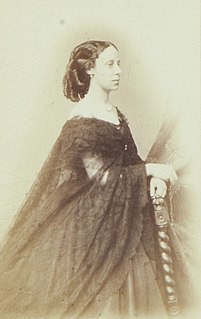
Neuwied is a town in the north of the German state of Rhineland-Palatinate, capital of the District of Neuwied. Neuwied lies on the east bank of the Rhine, 12 km northwest of Koblenz, on the railway from Frankfurt am Main to Cologne. The town has 13 suburban administrative districts: Heimbach-Weis, Gladbach, Engers, Oberbieber, Niederbieber, Torney, Segendorf, Altwied, Block, Irlich, Feldkirchen, Heddesdorf and Rodenbach. The largest is Heimbach-Weis, with approximately 8000 inhabitants.

Prince Wilhelm of Wied, reigned briefly as sovereign of the Principality of Albania as Vilhelm I from 7 March to 3 September 1914, when he left for exile. His reign officially came to an end on 31 January 1925, when the country was declared an Albanian Republic.

Prince Alexander Philipp Maximilian zu Wied-Neuwied was a German explorer, ethnologist and naturalist. He led a pioneering expedition to southeast Brazil between 1815–1817, from which the album Reise nach Brasilien, which first revealed to Europe real images of Brazilian Indians, was the ultimate result. It was translated into several languages and recognized as one of the greatest contributions to the knowledge of Brazil at the beginning of the nineteenth century. In 1832 he embarked on another expedition, this time to United States, together with the Swiss painter Karl Bodmer.

The County of Isenburg was a region of Germany located in southern present-day Hesse, located in territories north and south of Frankfurt. The states of Isenburg emerged from the Niederlahngau, which partitioned in 1137 into Isenburg-Isenburg and Isenburg-Limburg-Covern. These countships were partitioned between themselves many times over the next 700 years.
Wied-Runkel was a small German sovereign state. Wied-Runkel was located around the town and castle of Runkel, located on the Lahn River. It extended from the town of Runkel to further north of Schupbach, but also held an exclave east of Villmar.
Wied was a County of Rhineland-Palatinate, Germany, located on the river Wied where it meets the Rhine. Wied emerged as a County earlier than many other German states. From 1243–1462, Wied was united with an Isenburgian County as Isenburg-Wied. Wied was partitioned twice: between itself and Wied-Dierdorf in 1631, and between Wied-Neuwied and Wied-Runkel in 1698. Via William of Albania, the House of Wied ruled the Principality of Albania in 1914.

The House of Liechtenstein, from which the principality takes its name, is the family which reigns by hereditary right over the principality of Liechtenstein. Only dynastic members of the family are eligible to inherit the throne. The dynasty's membership, rights and responsibilities are defined by a law of the family, which is enforced by the reigning prince and may be altered by vote among the family's dynasts, but which may not be altered by the Government or Parliament of Liechtenstein.

Carol Victor, Hereditary Prince of Albania was the only son of William, Prince of Albania and briefly heir to the Principality of Albania. He held the title of Hereditary Prince of Albania. He was also styled Skënder, in homage to Skanderbeg, the national hero.

Princess Marie of the Netherlands was the fourth child and younger daughter of Prince Frederick of the Netherlands and wife of William, 5th Prince of Wied. She was the mother of William, Prince of Albania. She was the last surviving grandchild of William I of the Netherlands.

William V, Prince of Wied was a German officer and politician, elder son of Hermann, Prince of Wied. He was the father of William, Prince of Albania and brother of Queen Elisabeth of Romania. By birth he was a member of the House of Wied.

Princess Pauline of Württemberg was the only child of William II of Württemberg and Princess Marie of Waldeck and Pyrmont to reach adulthood. Pauline was the wife of William Frederick, Prince of Wied and worked for many years as the regional director of the German Red Cross in western Germany.

William Frederick, Prince of Wied was a German nobleman, eldest child of William, Prince of Wied. He was an elder brother of William, Prince of Albania.

The House Order of Albert the Bear was founded in 1836 as a joint House Order by three dukes of Anhalt from separate branches of the family: Henry, Duke of Anhalt-Köthen, Leopold IV, Duke of Anhalt-Dessau, and Alexander Karl, Duke of Anhalt-Bernburg.

Johann Friedrich Alexander of Weid was a German ruler. He was the son of Friedrich Wilhelm of Wied and Luise Charlotte Dohna-Schlobitten. He was Count of Wied-Neuwied from September 17, 1737 to May 29, 1784, when he was elevated to Prince and continued to rule in that capacity until his death on August 8, 1791. He was married to Karoline von Kirchburg. They had three children Frederich Karl of Wied, who succeeded him as Prince, Alexander August of Wied and Sophie Karoline of Wied.

The House Order of the Wendish Crown was an Order of the House of Mecklenburg, jointly instituted on 12 May 1864 by Grand Duke Friedrich Franz II of Mecklenburg-Schwerin and Grand Duke Friedrich Wilhelm of Mecklenburg-Strelitz.

Runkel Castle, a ruined hill castle from the High Middle Ages, is located in the city of Runkel in the Landkreis of Limburg-Weilburg in the state of Hesse.

The royal descendants of John William Friso, Prince of Orange currently occupy all the hereditary European royal thrones, with Friso and his wife, Landgravine Marie Louise of Hesse-Kassel, being the most recent common ancestors of all the European monarchs. Due to the intermarriage of the European royal houses, many monarchs are descended from Friso in more than one way. Through history, Friso has also been the ancestor of many monarchs whose thrones no longer exist.
Events from the year 1867 in Germany.
















